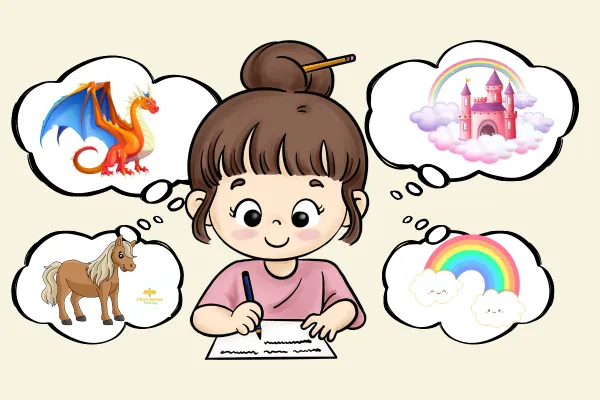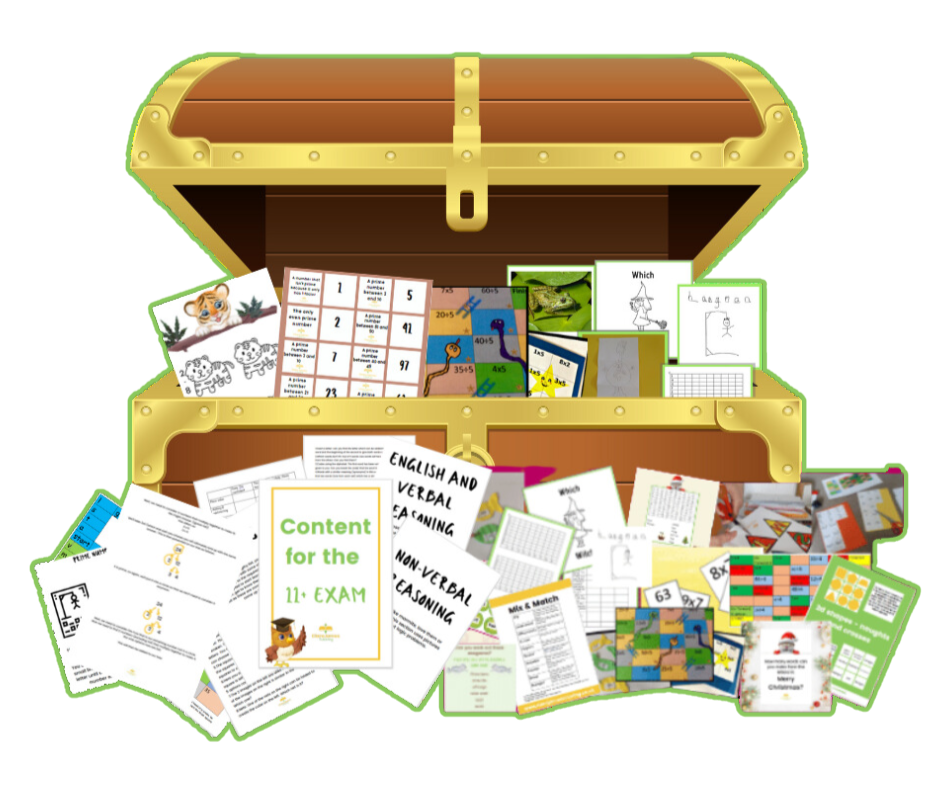Clara James Tutoring
BLOG POSTS

Creative writing in the 11+
Within the 11+ exam there is a creative writing which is designed to assess a child's ability to write imaginatively, structure their ideas, use a wide range of vocabulary, and demonstrate a good grasp of grammar, punctuation, and spelling.
The type of creative writing task can vary depending on the school or exam board, but here are some common types of tasks you might encounter:

1. Story Writing
Prompt-based: You may be given a prompt or the opening line of a story, and you’ll need to continue the story from there. For example: *“As the clock struck midnight, a mysterious figure appeared in the doorway...”
Picture-based: A picture might be provided, and you’ll be asked to write a story based on the image. For example, a picture of a deserted island or a spooky house.
2. Descriptive Writing:
Scene Description: You might be asked to describe a particular scene, such as a busy marketplace, a stormy night, or a garden in spring. The focus here is on using vivid and detailed descriptions to paint a picture in the reader's mind.
Character Description: You could be asked to describe a character in detail, focusing on their appearance, personality, and actions. (I would potentially use funny pictures as a basis for this but take the description deeper).
3. Writing a Letter
Formal Letter: You might need to write a letter to a headteacher, a newspaper, or a local authority, often on a given topic, such as persuading someone to take action on an issue.
Informal Letter: You may be asked to write a letter to a friend or family member, perhaps recounting a recent experience or event.
4. Writing from a Different Perspective
First-person narrative: You could be asked to write from the perspective of a character, such as describing a day in the life of a pet, a younger sibling, or a character in a story.
Diary Entry: This might involve writing a diary entry for a character or for yourself on a particular day, focusing on thoughts, feelings, and events.
5. Persuasive Writing
Argumentative Essay: You might be asked to write a piece arguing for or against a particular topic, such as whether children should have more homework or the benefits of recycling.
6. Continuation Task
Continuing a Story: You might be given the beginning of a story or a situation and asked to continue it, developing the plot, characters, and ending.
General Tips for 11+ Creative Writing
Plan Before You Write: Spend a few minutes planning your story or piece. Think about the structure (beginning, middle, end), characters, and key events.
Use Descriptive Language: Use a range of adjectives, adverbs, and similes/metaphors to create vivid imagery.
Show, Don’t Tell: Instead of stating emotions or actions, show them through your writing. For example, instead of saying "he was scared," you could write "his hands trembled, and his heart raced."
Paragraphing: Organise your writing into clear paragraphs with a beginning, middle, and end.
Check Your Work: If time allows, read through your writing to check for any spelling, grammar, or punctuation errors.
The key to succeeding in the 11+ creative writing task is to practice regularly, read widely to develop your vocabulary and ideas, and to always plan your writing before you begin.
I hope this helps, above I mentioned funny pictures, but a couple more scenarios that you might also find helpful are (persuasive writing):
You are in a hot air balloon several hundred meters above the Atlantic Ocean.
The balloon starts to lose height. Someone must be thrown out to save you all from going down.
It doesn’t matter who you want to be, but your job now is to persuade everyone that you need to be kept on board.
Or:
(Creative writing) A giant hole has appeared in your street.
What do you think is at the bottom of it?
How deep do you think it is? Can you hear any noises coming from it? Does it have a smell?
When did it appear and why?
Enjoy your day and happy writing,

Our goal at Clara James Tutoring is to make learning fun and accessible to everyone. If children are engaged in what they are doing they are more likely to want to participate, if they are enjoying it, they are more likely to relax and retain the information.
If they are retaining the information it will help boost their knowledge and with knowledge comes confidence.
If you have a child who enjoys learning through games and being more creative, and you enjoy spending time with them, you might be interested in the Clara James Approach, the membership group we have put together to support you in supporting your primary school aged child with their maths and English.
Interested?
Click here to learn more: The Clara James Approach
Morning,
I hope the week is going well.
So many people seem to be doing D of E and work experience
at the moment, good luck if that’s you and if you’re at Marlow Camp next
fingers crossed for good weather!
I’ve just finished a lesson on division. It seems to be
something that messes with the brains of so many people.
I found it got easier when I stopped thinking about it as
division and instead thought about it as multiplication. So, if for example I
had the question 396 divided by 3, I would look at it as 3x what = 3. My answer
would be 1. How many times would I need to multiply 3 to get to 9, (my answer
would be 3). Then 3x something = 6. My answer would be 2. Giving me the overall
answer of 132.
I know that’s a really simple example but hopefully it explains
my point.
Thankfully in schools they don’t often seem to need to do
long division, but I’ve worked with a couple of adults (generally nurses for
some reason) who have needed it.
I think I’ll explain this one in a video, as it will be too
complicated to explain it with words as bits get put all over the place. I hope
this makes sense though:
Enjoy the rest of the week and speak soon,
Dawn

